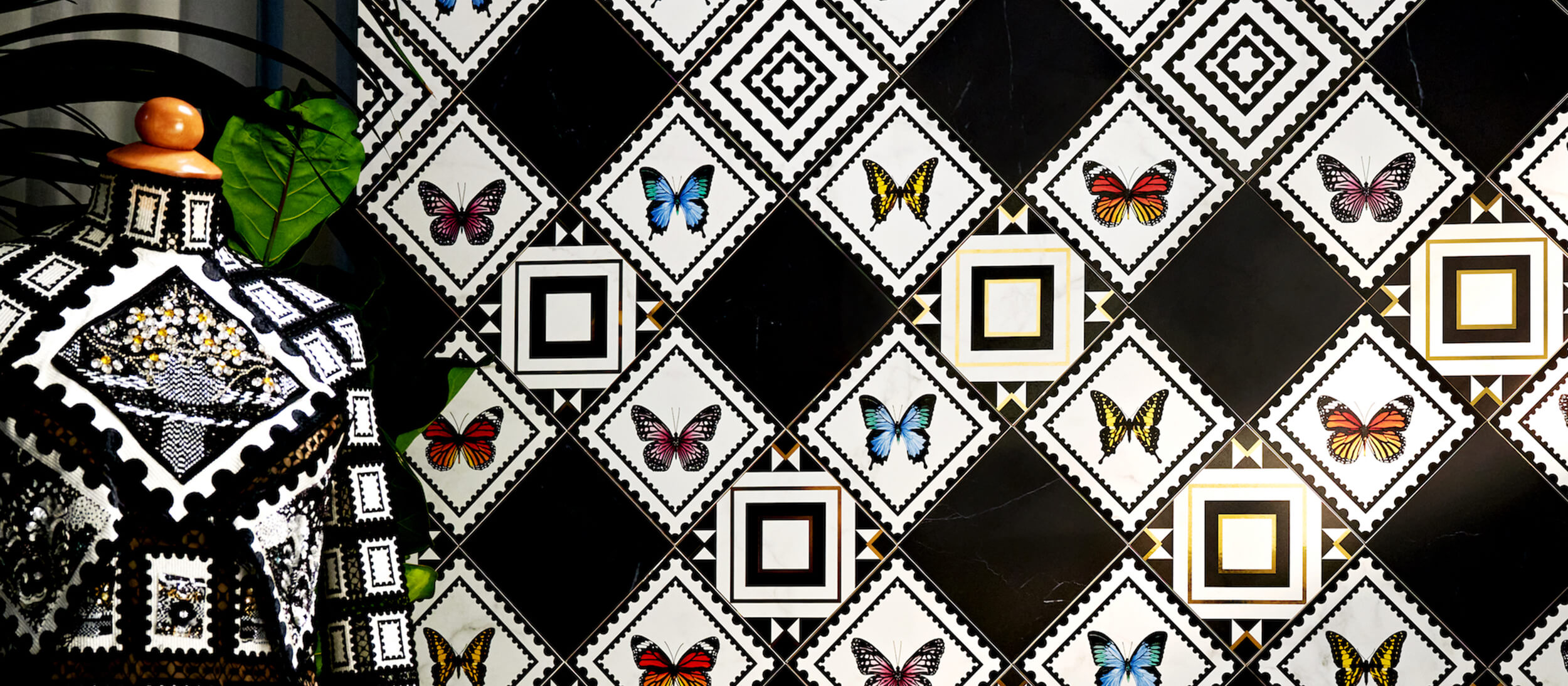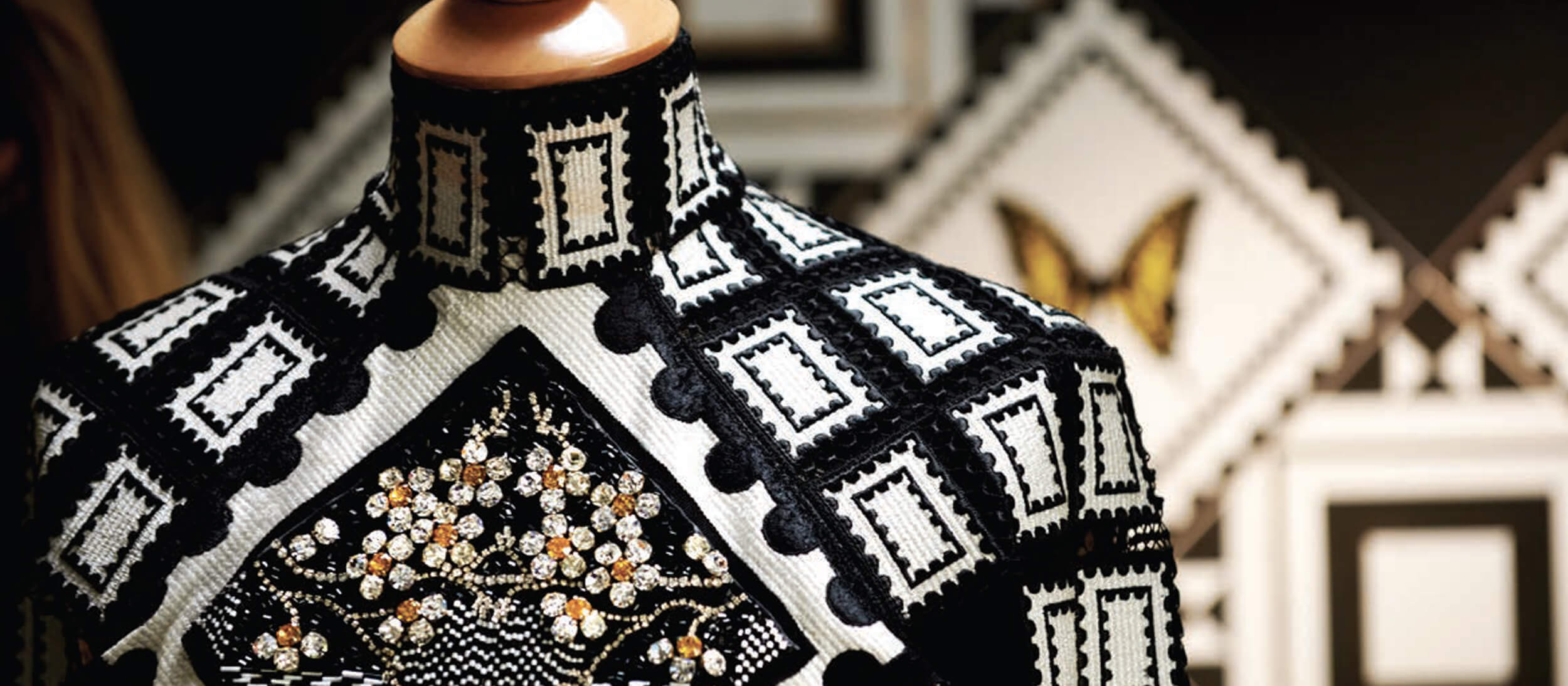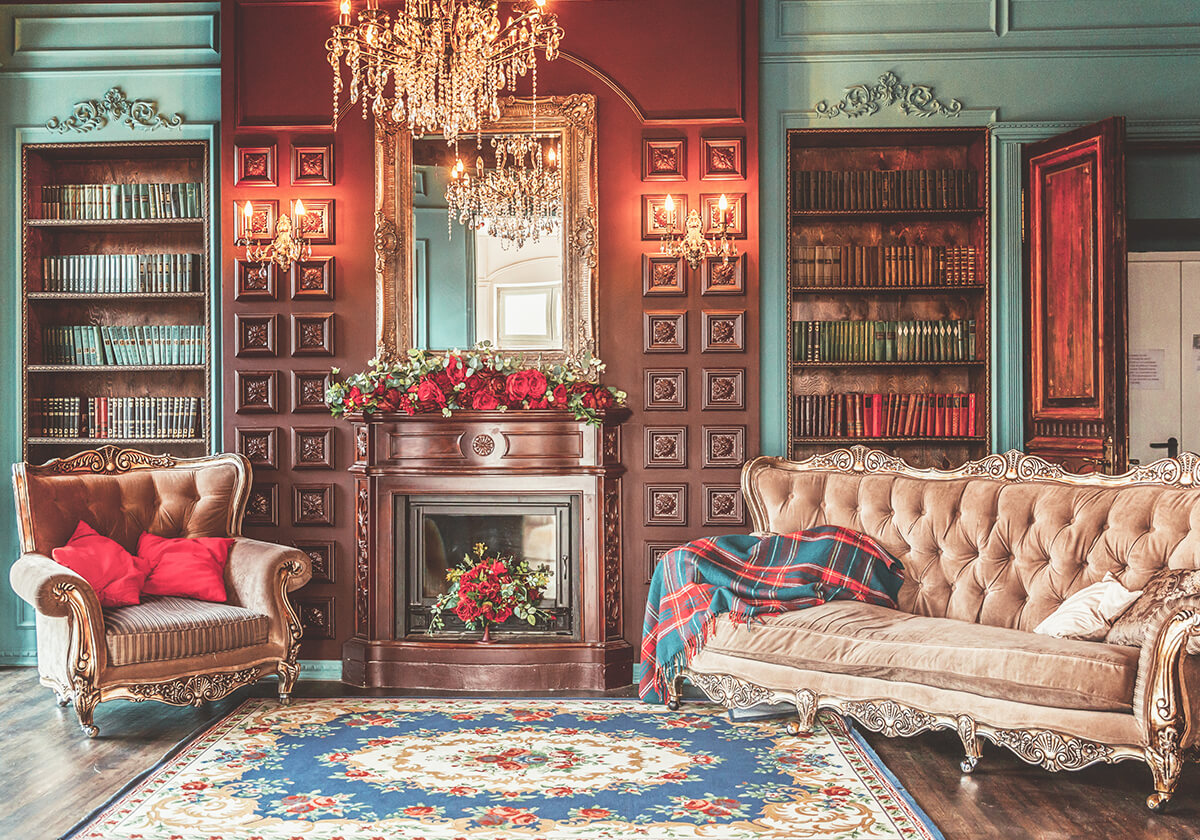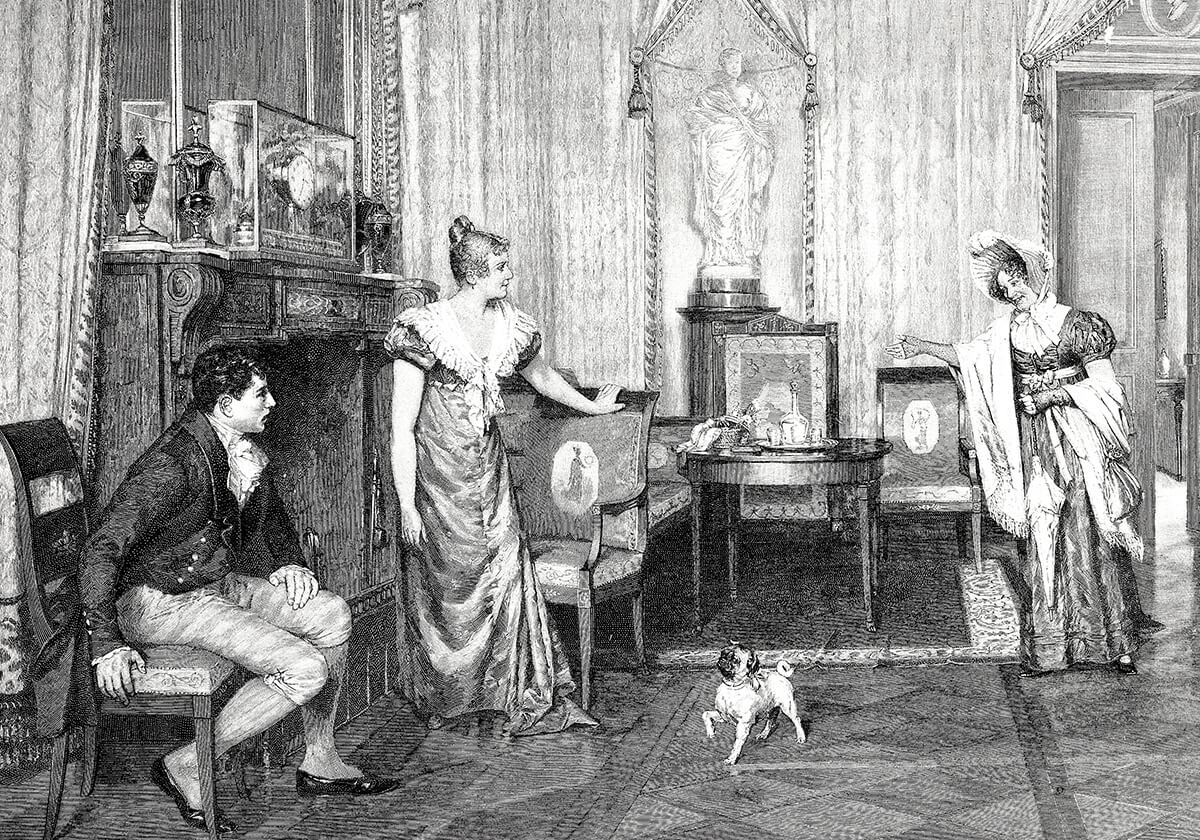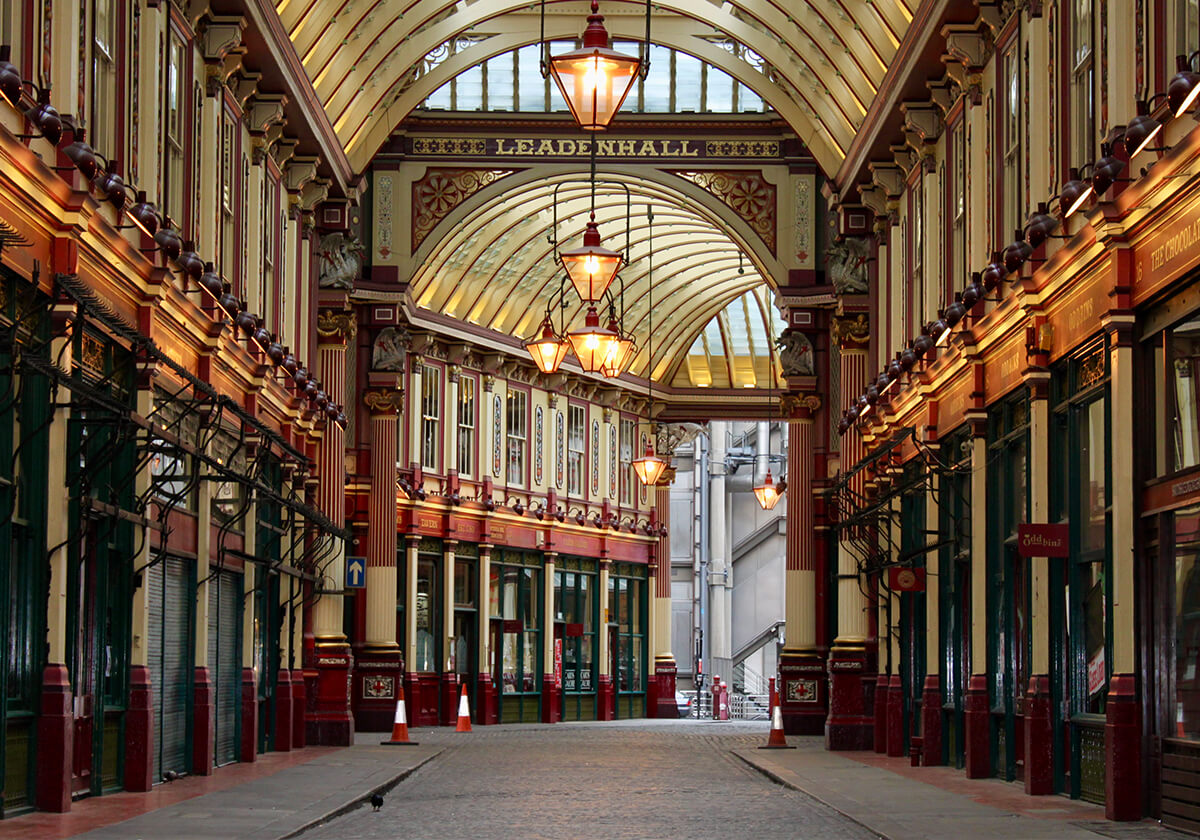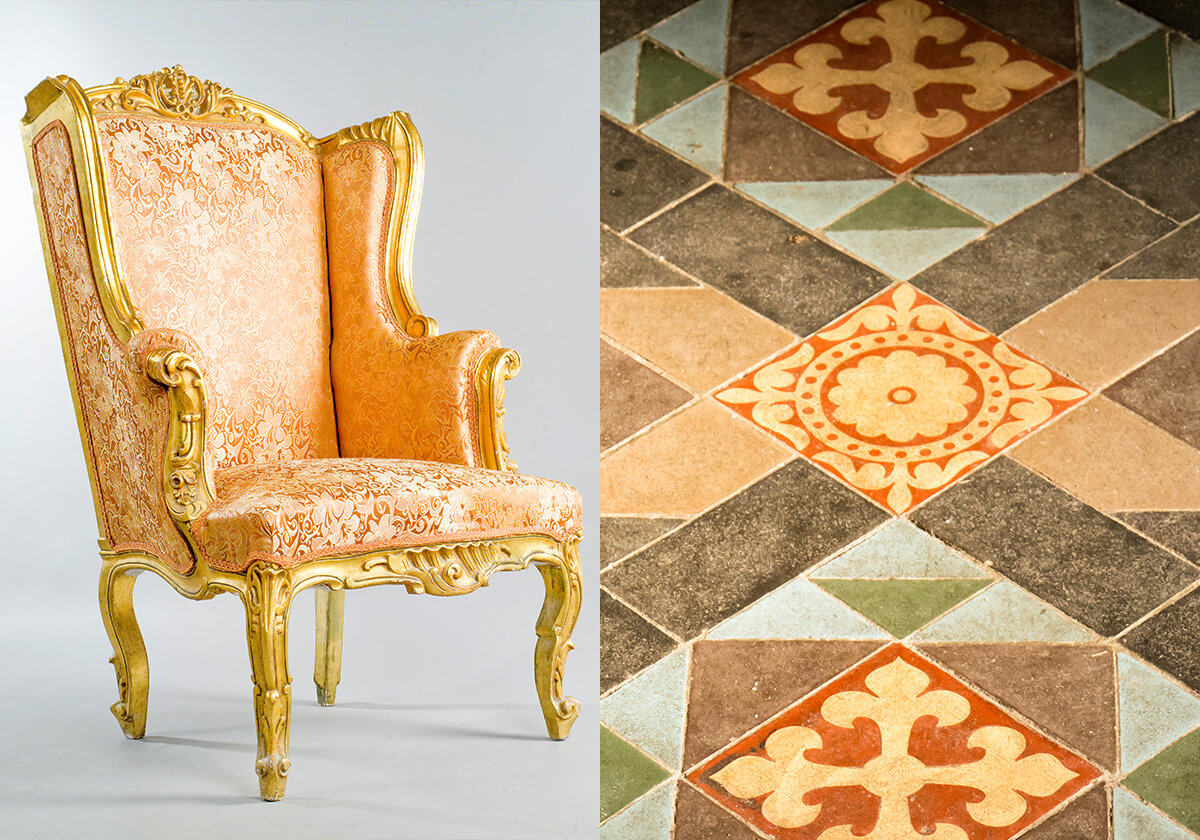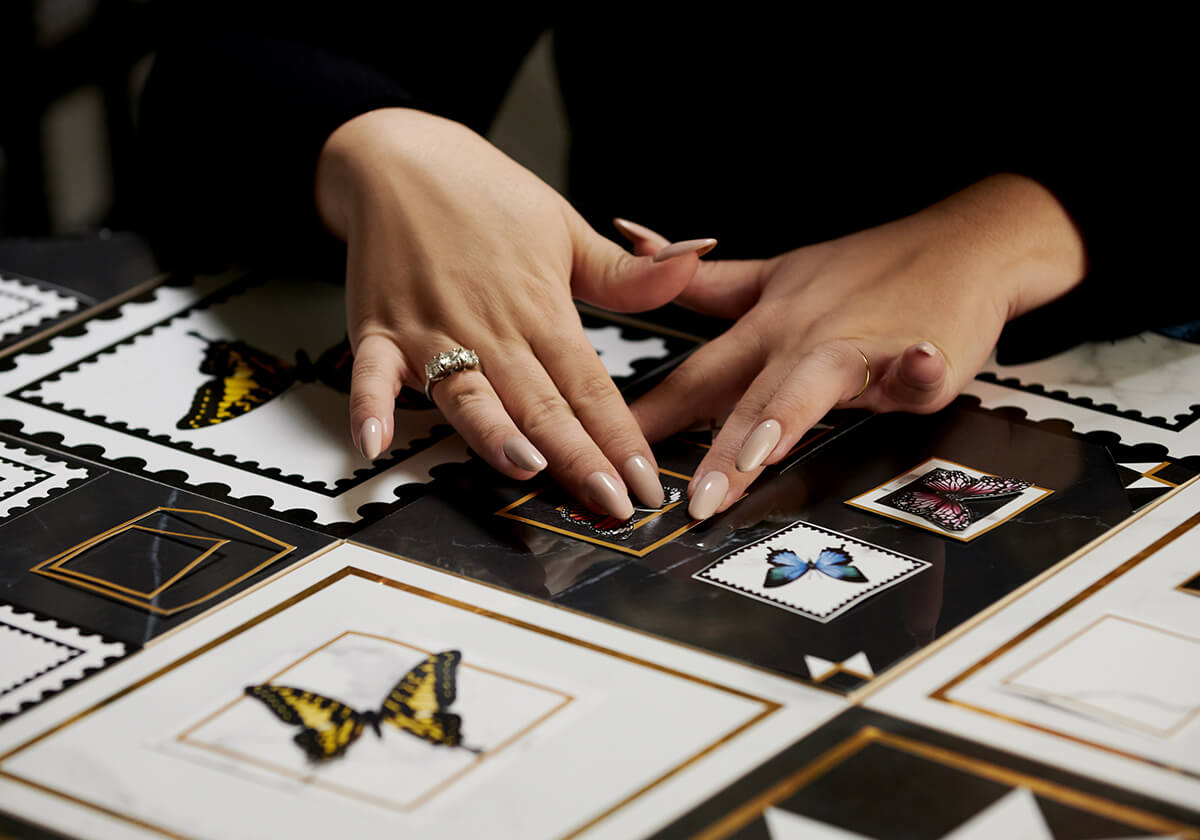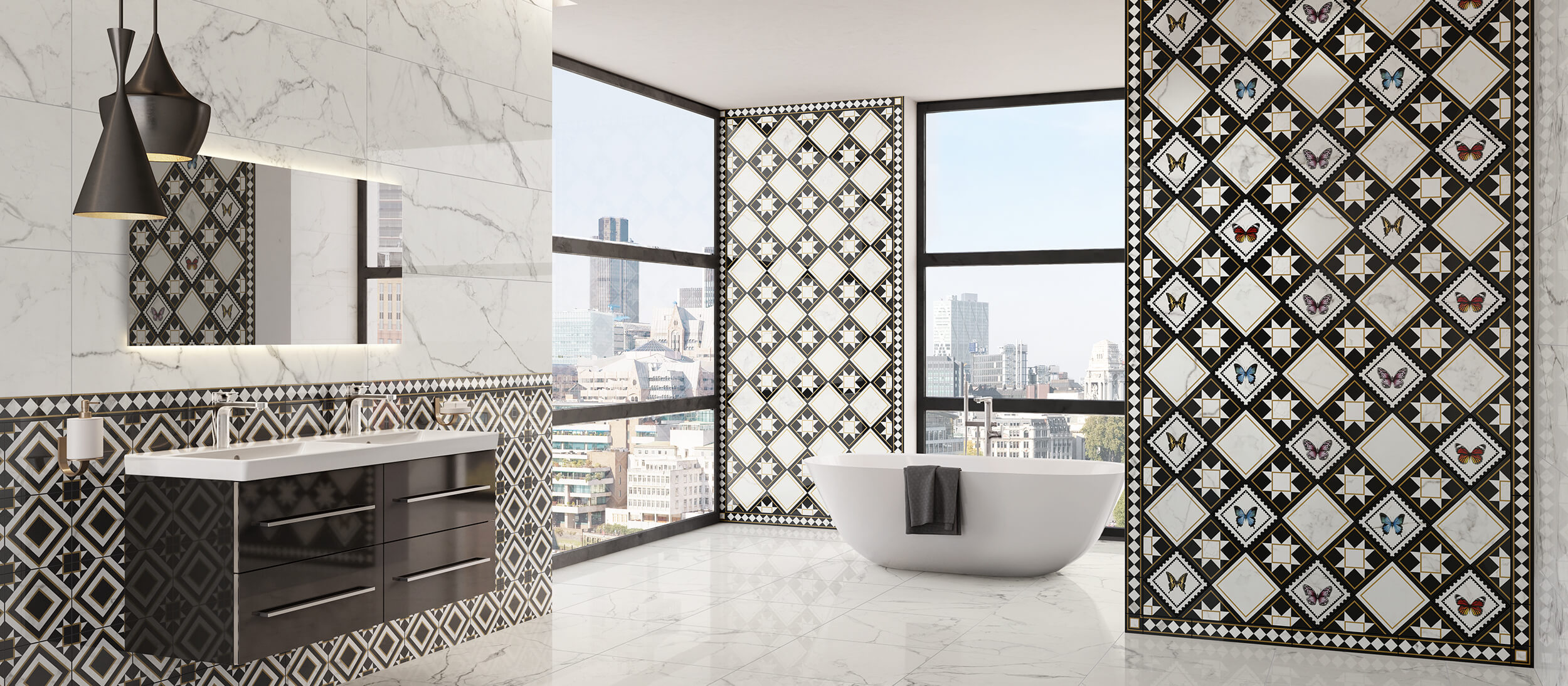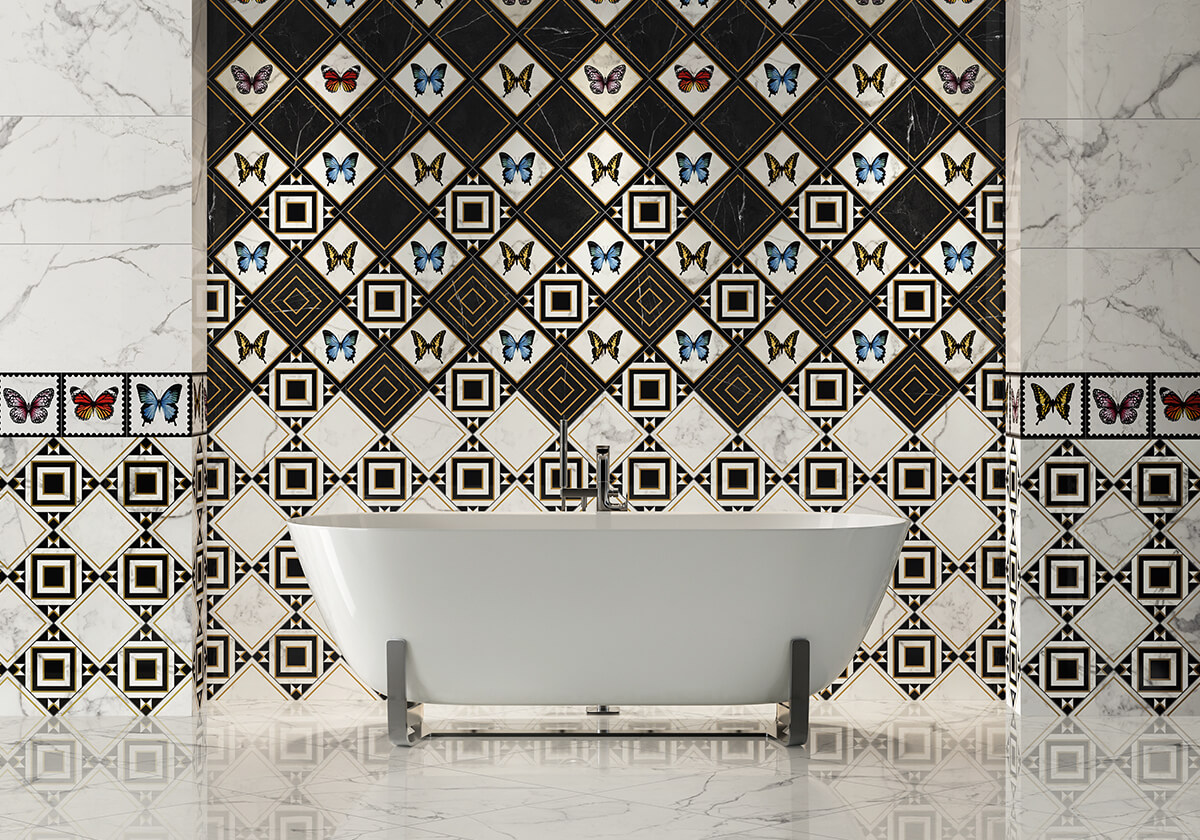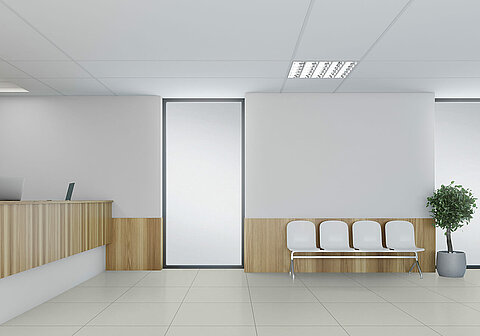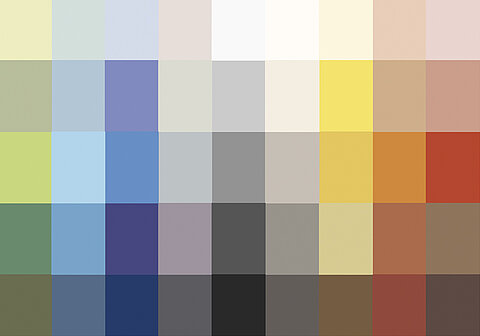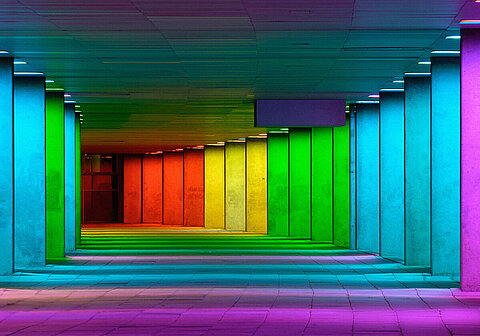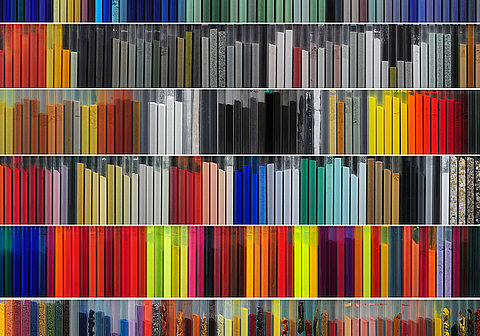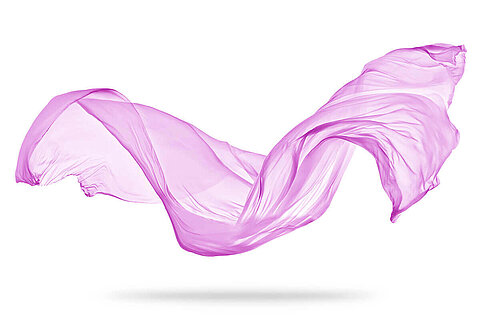A tile collection combining graphic modernism and history
Extraordinary design ideas that underscore stylish surroundings: Villeroy & Boch has a long tradition of finding inspiration in designers from a wide variety of disciplines. Following influential figures including Joop, Paloma Picasso, Luigi Colani or Kenzo, now fashion designer Mary Katrantzou has created an exclusive collection for Villeroy & Boch Tiles.
Steckbrief
Studies: Architecture and textile and fashion design in Rhode Island, USA, and London
Place of birth: Athens
Registered office: London
Year of foundation: 2008, London
Trademark look: Fabric décors with architectural shapes as digital print
Awards:
2010: Swiss Textile Award.
2011: British Fashion Council Awards, category: Emerging Talent.
2012: Elle Style Awards, category: Next Young Designer.
2015: Vogue Designer Fashion Fund
Fashions by Mary Katrantzou stand for colourful digital prints characterised by the contradictory aesthetics of mixed media, craftsmanship and opulent ornamentation. The uniquely iconic look of the collection from 2018 now continues with the VICTORIAN tile collection: Victorian-era motifs that date back to the 19th century blend with modern graphic décors to create a unique style that gives every room a special air.
Your mother is an interior designer, the first part of your studies was about architecture. At what point did you decide to switch to textile design?
My mother is an interior designer and my father a textile engineer. Being surrounded by these parental influences, instilled in me a curiosity to study the world of applied design. I originally started by studying architecture at Rhode Island School of Design, however it was during a semester abroad program at Central Saint Martins, that I chose the Textile Design course. My time at CSM led to me moving to London permanently to complete my studies in Textile Design and eventually led to my interest in fashion. I became more and more interested in print engineering around the female figure and was able to apply the same principle that interested me in architecture - blurring the boundaries between decorative mediums and challenging perception.
Today you rightly are called the "Queen of Print". Printing textiles was already the subject of your thesis at the Central Saint Martins University. How have you developed this technology since then and made it your own? To what extent is craftsmanship part of your design process?
At the beginning of my journey in the industry, print allowed me to define my work as an image maker. Dubbed “The Queen of Print” became a moniker used to describe my work and my influence on the medium. As my brand matured, I felt I had said so much through digital print that I wanted to explore our bandwidth. This was when innovation and craftsmanship became just as definitive in my work, as the narrative itself.
I wanted to apply the same process of invention to exploring craftsmanship and focusing on strong silhouettes. The shift from print felt like a natural progression, drawing the focus to texture and form and building on a new visual medium. My work continues to be thematic, and I enjoy a strong narrative but now that can be translated not only through hyper real prints but also through innovation in textile design, precision cut silhouettes and through the harmony that is created between all the pillars that form a collection.
You have not simply printed textiles. You have created a completely new style direction in fashion design by using a wide variety of objects such as pieces of jewellery, stamps, typewriters or shoes as design elements. The success: labels in all price ranges have incorporated similar designs into their collections. In what way does digital technology already come to your aid in the associated idea generation?
It's exciting to delve into a new idea and use it to dictate the direction of each collection. I always strive to design unique pieces that reflect a strong narrative bringing together a combination of ideas spanning from architecture, film, or filtered beauty in design. There is always scope to push the boundaries of a field where there are constant advances in technology. In our collections we use digital craftsmanship not only for our prints but to create our own innovative textiles. Textiles always had the power to push fashion forward and I feel my work as a designer should always fullfilt that responsibility.
There is always scope to push the boundaries of a field where there are constant advances in technology.
What is your favorite fabric?
I love the research behind creating our own substrate. Whether it’s our own lace, or jacquard or embroidered based, we still design and create a large percentage of the textiles we use.
How do you go about developing a new design? What inspires you? What decisions have to be made? Do you just go by your own feelings or do you study general trends in culture, design, fashion?
Inspiration can be found everywhere and I always draw it from very diverse ideas. Working with images creates a very strong visual language and I use that to tell a story. For this new collection, I was keen to revisit one of the recurring themes from my fashion collections: butterflies. I’m intrigued by the process of metamorphosis with its four-stage life cycle, and the idea of rebirth and evolution – from adapting to evolving and growing. As human beings, we all go through some type of metamorphosis through life, and butterflies are symbolic of this message of optimism.
The art of royalty
Victorian style shapes design down through the centuries
This famous epoch for style bears the name of British Queen Victoria (1837-1901) for good reason. Luxurious materials, detailed décors, opulent materiality – the desire for extraordinary design of spaces is becoming the trend of our day.
The fact that Victorian style is not reserved for royalty alone is mainly a result of the industrialisation that began in these years on the British isle. Thanks to machine production, all of a sudden it became possible to produce furniture, décors and accessories in large and thus affordable quantities. The fresh desire for the extraordinary is now visible throughout the room: on walls, ceilings and floors, in carpets, curtains, wallpapers and even on tiles. Wherever there is room for form and colour, for floral ornamentation and for motifs inspired by the animal kingdom. This marked the birth of classic exclusivity combining opulence with restraint.

Let’s have a look at the strategy behind your designs: Would you agree when people describe your designs as timeless, stylish? As wearable, yet extravagant fashion that outlasts short-lived trends? Signature pieces that put the spotlight on the special something?
When you work in the fashion industry, you always have to be in sync with the times, as it is such a fast-paced industry. At the same time for me, it is extremely important to create timeless pieces by employing a high level of craftsmanship and execution while offering clothing suitable for the modern woman and her everyday life. What makes fashion timeless is the ability to design with integrity and originality.
You have already cooperated with large companies and exchanged inspirations. Surprisingly, despite your history, there have only been a few in interior design, why is that?
In 2019, we entered Home through a collaboration with the Rug Company and now I’m very excited to be collaborating with Villeroy and Boch! We want to be very selective in this space and give ourselves the time to develop each partnership. Having said that, our intention is indeed to expand further in this space. As we are an image led brand, using colour and pattern that are easily transferable across different disciplines, it is very exciting to be part of someone's home where they surround themselves with things they love. It creates a feeling of permanence that’s very different to the very nature of fashion.
Let’s talk about the butterflies again. The central motif of your 2018 collection can now also be discovered on tiles. What led you to the journey into interior design? How did you become aware of the Villeroy & Boch tiles brand?
Alongside our interest in Victorian tiles, we wanted to revisit the butterfly theme. Both disciplines (fashion and interiors) require an understanding and application of balance, symmetry, and proportion. For this new collection, I wanted to transform tiles into a collectible piece of art.
You visited the V&B production site in Merzig, Germany. You also had the opportunity there to learn about the company's past. What has impressed you most?
When Villeroy & Boch approached me for this collaboration, I was excited to discover its world and the process behind the creation of its tiles. When I visited Villeroy & Boch tiles’ headquarters in Merzig, Germany, I was fascinated by the incredible mosaics from its archives with elements that referenced Victorian designs.
There's a synergy between the two brands as we share an appreciation of beauty, craftsmanship and history. Using my prints and transferring them across different disciplines is a challenge that I’m always drawn to and having the opportunity to enter people’s homes and their everyday environment through this collaboration was creatively very rewarding. This collaboration with V & B allowed us to be guided by the power of interiors to create an extension of one's aesthetic.
Your collection for the Villeroy & Boch Tiles brand is called VICTORIAN. What about this great design-shaping era inspired you in particular?
When we visited their headquarters, we had just showed our autumn/winter 18 collection titled “From Victoriana to Bauhaus” and I immediately noticed the incredible floor tiles that featured heavily through all their hallways of the abbey in Mettlach. After a series of discussions with the team at Villeroy & Boch tiles, we decided to reintroduce its Victorian designs into this collection – not only as a nod to the brand’s own heritage, but also as a way to create an interplay between our respective archival designs
Which elements/tiles besides the butterfly are part of the collection? How would you combine the different shapes and designs? Which living and lifestyle feeling would you like to create?
Another recurring theme to my work since Spring/Summer 2013, is postage stamps. In a world where stamps are becoming obsolete, I appreciate them even more as tokens of the past and relics of a different era. Through the VICTORIAN collection, I wanted to create a vignette within the home, a window into the world that captures this sense of nostalgia but is equally graphic and modern in its design. For designing, there is so much possibility because of the beauty and versatility of this collection. If I were to describe the collection and the feeling you get from the tiles in 3 words, it would be nostalgic, elegant and bold.
If I were to describe the collection and the feeling you get from the tiles in 3 words, it would be nostalgic, elegant and bold.
What possibilities does the material ceramic give you to work with? Is it possible to set different accents, choose different colours, etc. than on textiles, for example?
One of the most exciting elements of this collaboration is how it allowed me to lean into my architecture background. Ceramic allows you to build inhabitable spaces in a way that fashion does not, it also allows every customer the opportunity to personalise how they use the product to create their own interior design using the building blocks we have designed for them.
Where would you like to see the new tiles?
garden, the main entrance or around the fireplace. There is so much possibility because of the versatility of this collection.
What do you need to feel completely comfortable at home?
I’m actually designing my own bathroom with the new tiles. I feel comfortable when I surround myself with timeless design and it gives me so much joy to incorporate our collaboration in the space that is my most personal. .
One last question: What’s next for Mary Katrantzou? What can we expect?
Who knows, maybe it's a second tile collection with V&B!
The tile collection created by the fashion designer revolves around the Victorian butterfly. Surrounded by white and black marble look, it becomes the brightly coloured ambassador of nature in the interior. Enframed in gold or in the perforation of postage stamps typical of Katrantzou’s fashion designs, the motifs look like tiny artworks. All the more so when combined with the variety of classically geometric décors that have a defining effect on their surroundings.


